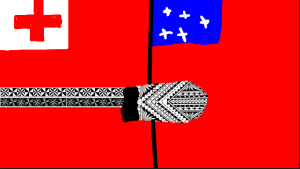Polynesian Explorers
Highlight the correct answer, or type in what you think is correct.
- When, and where was Tupaia born?
- a) Around 1825 in Rā‘iātea
- b) Around 1725 in New Zealand
- c) Around 1825 in New Zealand
- d) Around 1725 in Rā‘iātea
- Rā‘iātea is a part of which larger group of islands?
- a) Samoa b) Tahiti
- c) Rapa Nui d) Micronesia
- What was the name of the British official sent to secure British rule over NZ?
- a) William Johnson b) Abel Tasman
- c) William Hobson d) Captain James Cook
- One day, more people would come – a different kind of people altogether. They would arrive on a canoe with no outrigger and would change everything: “And this land will be taken by them” Vaita said.
Did this prophecy come true? Explain.
→It was 50-50 because they didn’t really know at first.
- Only about 20 of the painted hoe that were given to Captain Cook in 1769 by Māori survive.
- a) True b) False
- Describe the role that Tupaia had on board the Endeavour – what did he do on Captain Cook’s ship?
→He was an interpreter and Guide of the Endeavor.
| WORD |
DEFINITION |
YOUR OWN SENTENCE |
| interpreter |
A person who interprets,especially,one who translates speech orally or into sign language. |
I’d like to have a Japanese interpreter. |
| diplomat |
a person who can deal with others in a sensitive and tactful way. |
The president will be meeting with foreign diplomats. |
| indigenous |
inhabiting or existing in a land from the earliest times or from before the arrival of colonists. |
The park is also a home to indigenous tribes. |
- Explain the four reasons why Hoe were important, and special pieces of technology for Maori.
→ They were important in all areas of life. Hoe waka were used to paddle waka, and waka had many different uses.
→ The top hoe (paddle) is a steering paddle, or hoe whakatere. The hoe in the middle is from the Waikato tribe. The hoe at the bottom is also from Waikato, although the design was common throughout New Zealand.
→
Mātauranga Māori will articulate and include both physical and non-physical values (such as mahinga kai species, swimmability, sense of place, identity and relationships, and wai tapu) and the positive and negative influences of these values.
→
Hoe waka were valued for a number of reasons. They were important in all areas of life. Hoe waka were used to paddle waka, and waka had many different uses. They were used for collecting and transporting food such as fish and kūmar
- Tupaia (up until recently) and much more Polynesian history remains oral history (that means told by speaking). How can we ensure that this history is available to learn for future generations? Try to come up with at least 2 ways.
→ How we can learn for future generations is maybe we can pass it down to the next generation and next and so on or Maybe we could get everyone to know about this and share it around the whole world.
